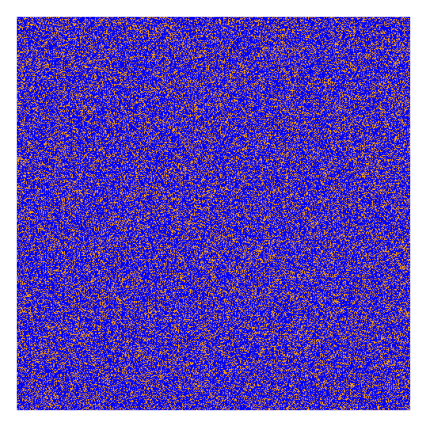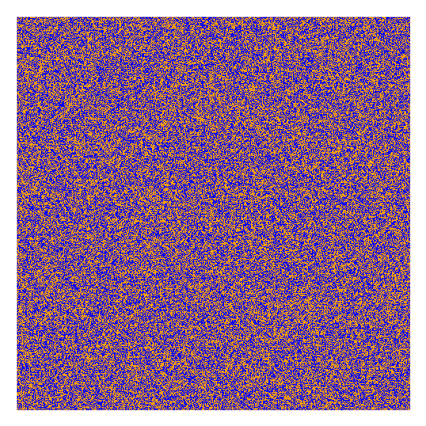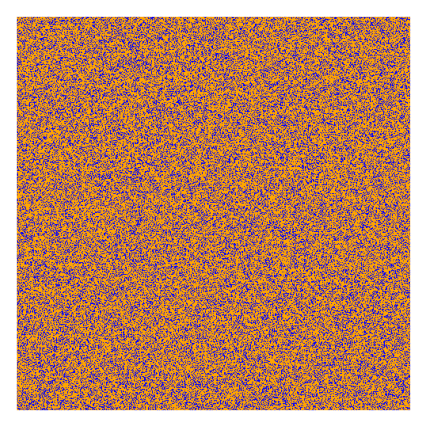Introduction:
Welcome to our web experiment designed to explore human decision-making when faced with choices based on visualizations.
In this study, you will take on the role of a scientist tasked with distinguishing between two chemicals that got mixed.
The chemicals differ in that in one (the “Blue” chemical), there tend to be predominantly blue dots and in the other (the “Orange” chemical) there tend to be predominantly orange dots.
Imagine you are in a laboratory, peering through a high-powered microscope at a sample. Within the microscopic field of view, you will encounter a multitude of tiny dots, each appearing as either Blue or Orange.
The more blue dots you observe in the image, the more likely it is that the sample originates from the "Blue" chemical. Conversely, an abundance of orange dots suggests that the sample is derived from the " Orange" chemical.
Image Example:
You will encounter a series of trials, each featuring a box filled with dots.
The number of dots and their colors within the box will vary.
In the images below the first box is 70% blue and 30% orange. The second image is 50% blue and 50% orange, and the last image is 30% blue and 70% orange.



Task:
The experiment consists of three sequences with 30 trials in each sequence.
In each trial, you need to decide whether the sample is the “Blue” chemical or the “Orange” chemical.
Note - that 60% of the samples are from the "Blue" chemical.
In the first sequence of trials you will only see the samples. In the second and third sequences you will also see the output of a recommender system that indicates whether, according to its analysis,the sample is the “Blue” or the “Orange” chemical.
Scoring:
Points are awarded based on the accuracy of your choices.
If you select the correct color (blue or orange) and the actual color matches your choice, you will earn a point.
However, if you make an incorrect choice, you will lose a point.
The participant who will get the highest score will win a $10 prize among the trial participants (30 people).